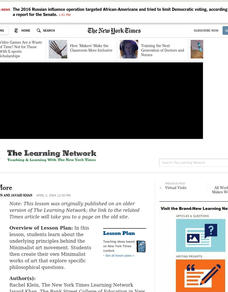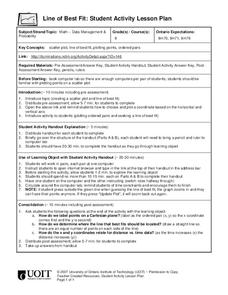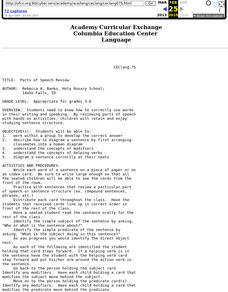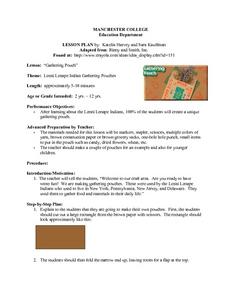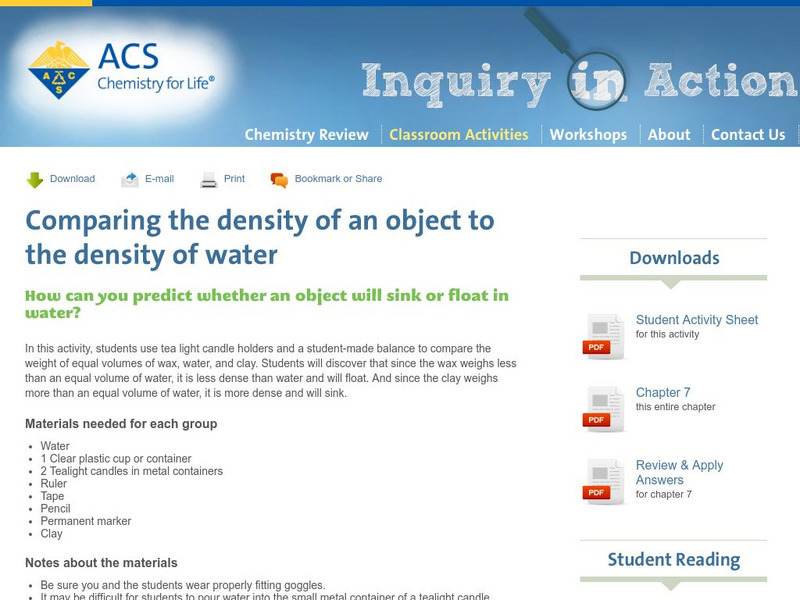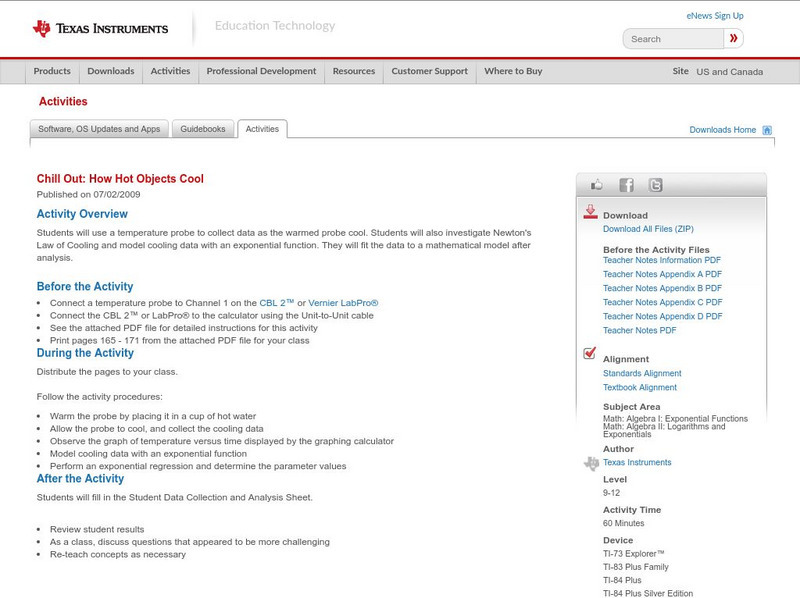Curated OER
Italy: Festa del Grillo
Students examine the traditions of the Festa del Grillo in Italy and its relationship to the culture of Italy. After being shown examples, they create their own cricket out of materials found in the classroom. Using 3D, they decorate a...
Curated OER
Enhancing Social Skills and Vocabulary through Photography
Students in a special education classroom identify pictures of various living things. In groups, they role-play different roles to help them with their social and communication skills. To end the lesson, they take pictures of different...
Curated OER
Blast from the Past
Students analyze historic artifacts to help gain an understanding of how the past has impacted their lives. They explain ways "design" can be both a noun and a verb. Students use internet resources to view and learn about artifacts that...
Curated OER
Guess Who? Coral
Fourth graders identify and group coral formations. In this coral identification lesson, 4th graders examine coral pictures, discuss vocabulary, and provide similarities and differences in the growth formations.
New Zealand Ministry of Education
Fraction Bar
Computing class members encounter use a digital learning tool called The Fraction Bar to multiply fractions with whole numbers. They do so by finding a given fraction of a number either on a number line or by calculating the answer with...
Curated OER
Less Is More
Students explore the underlying principles behind the Minimalist art movement. They create their own Minimalist works of art that explore specific philosophical questions.
Curated OER
Color Graphs and Poetry
Students explore color as they create graphs, write poetry, and examine varied interior designs. They respond to writing prompts describing their favorite color. Students collect data and create a bar graph based on a class survey. They...
Curated OER
The Power of Persuasion
Students explore the power of persuasion. In a classroom setting, students discuss incentives, testimonials and deceptive pricing schemes that are used to influence others. After observing professionally made infomercials, students...
Curated OER
Line of Best Fit
Students calculate the equation of the line of best fit. In this statistics instructional activity, students create scatter plots and find the line of best fit going through their data. They make predictions and draw conclusions.
Curated OER
The Multiplier (2-digit by 2-digit numbers)
Fourth graders Split a 2-digit number into tens and ones. They use The Multiplier to partition and solve 2-digit by 2-digit multiplications. They describe how to solve 2-digit by 2-digit multiplications using a diagram.
Curated OER
The Multiplier (larger 2-digit by 1-digit numbers)
Students utilize number sense applications to multiply two digit numbers. They use "The Multiplier" and Internet source to partition and solve 2 digit by 1 digit multiplications. Students describe how to solve 2-digit by 1-digit...
Curated OER
Tree Identification
Students are introduced to the characteristics of trees and different techniques to identify them. They distinguish between a deciduous and a coniferous tree. Students describe at least four characteristics used to identify trees. They...
Curated OER
Potential & Kinetic Energy
Young scholars test different sized marbles and how fast they can go. In this energy lesson plan, students test different sized marbles going down an incline. They predict which would have the most potential and kinetic energy. After the...
Curated OER
Blinded by the Light
Students recognize that the colors they see are a result of the reflection of light. In this light and color lesson, students predict what color will be produced when lights are mixed. They identify the three primary colors and secondary...
Curated OER
Algebra/Geometry Measurement
Fifth graders investigate units used to measure different geometric situations. For this geometry lesson, 5th graders measure length, mass, volume and temperature using units for measurements. They estimate the measurements before...
Curated OER
Parts of Speech Review
Students practice the parts of speech using index cards to label words in a sentence.
Curated OER
The Divider (whole number remainders)
Third graders use the lesson to support division of whole numbers where there is either no remainder or whole number remainders. They are able to
slit division problems into parts using known multiplication and division facts.
Curated OER
Enlightening Explorations, Part III
Sixth graders continue their examination of light. In groups, they make rainbows and examine the spectrum of visible light. They travel between various stations recording their observations about the behaviors of light. To end the...
Curated OER
Gathering Pouch
Young scholars cut out a large rectangle from brown paper with scissors. They fold the narrow end up, leaving room for a flap at the top and have the teacher staple the edges of the pouch together. They then decorate their pouch with...
American Chemical Society
Inquiry in Action: Changing the Density of an Object: Changing Shape
Throughout the activities in this investigation, students may have wondered how a boat made out of steel, which is more dense than water, can float. This activity addresses that question. Students will see that changing the shape of an...
American Chemical Society
Inquiry in Action: Changing the Density of an Object: Adding Material
In this activity, students see that a can of regular cola sinks while a can of diet cola floats. As a demonstration, bubble wrap is taped to the can of regular cola to make it float. This high-volume but light-weight material increases...
American Chemical Society
Inquiry in Action: Compare the Density of an Object to the Density of Water
In this activity, students use tea light candle holders and a student-made balance to compare the weight of equal volumes of wax, water, and clay. Students will discover that since the wax weighs less than an equal volume of water, it is...
Texas Instruments
Texas Instruments: Buried Objects Adventure 1
Students use the CBR 2 to gather data and identify "buried" objects. They interpret and analyze graphs of height as a function of time, and use the change in the y-coordinates of an ordered pair to determine the height of an object.
Texas Instruments
Texas Instruments: Chill Out: How Hot Objects Cool
In this activity, students can use a temperature probe to collect data as the warmed probe cool. Students will investigate Newton's law of cooling and model cooling data with an exponential function. They will fit the data to a...





